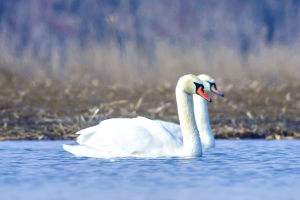The Koala, a marsupial unique to Australia, is one of the world's most recognized and adored animals. It resides primarily in the dry climate regions of Australia, thriving in the canopies of eucalyptus trees. With their plump bodies, endearing faces, and leisurely lifestyles, Koalas have gained worldwide fame for their undeniable cuteness.
Resembling plush toys, Koalas possess two large semicircular ears that stand upright on either side of their heads. Their faces are adorned with short, velvety fur. The Koala's charm lies in its cuddly appearance and captivating amber eyes.
Even those who aren't particularly fond of small animals find it hard to resist the urge to hug these adorable creatures upon witnessing their cuteness.
Beyond their adorable appearance, Koalas are known for their slow response times. Their reflex arcs seem to be quite lengthy, leading to comical and entertaining behaviors that bring joy to onlookers.
Despite their reputation for laziness, Koalas are incredibly adaptive and resilient, ranking among the most successful and tenacious animals in the Australian animal kingdom. They possess remarkable feeding capacity and a highly efficient digestive system that enables them to survive for extended periods without food.
Not limited to Australia alone, Koalas have garnered global attention and affection. Their cute imagery is frequently used in various commercial promotions and product designs, ranging from toys to tableware and clothing. The Koala has also become an iconic symbol of Australia's tourism industry, attracting a growing number of visitors from around the world.
However, this beloved species faces a grave threat of extinction.
Scientists have issued a distressing warning, revealing that there are now only approximately 30,000 Koalas remaining in the wild in Australia. The latest estimates demonstrate a significant decline from the 2018 figures of 46,000 to 82,000 Koalas, with the current population ranging between 32,000 and 58,000 individuals.
Consider that this once-thriving species boasted a population of over 8 million Koalas. When compared to the current numbers, it is an alarming decline.
Given that Koalas are endemic to Australia, their protection is of paramount importance within the country.
The Australian government has implemented various initiatives to safeguard these creatures, including strict prohibitions on hunting and capturing Koalas, as well as efforts to protect and manage their habitats. Nevertheless, the rapid pace of human development and the devastating impact of forest fires pose significant threats to Koala habitats.
In September 2021, Australian Environment Minister Susan Ley issued a statement that stunned the world. Koalas have been officially listed as an endangered species.
This designation aims to heighten awareness and ensure enhanced protection for these national treasures. The Australian Department of Environment has undertaken rigorous measures to safeguard the future of Koalas.
In addition to governmental actions, numerous non-governmental organizations and animal protection agencies are working tirelessly to protect Koalas. These groups strive to increase awareness of Koala conservation and actively engage in fundraising, education, and participation in habitat preservation projects.
Given the importance of global cooperation for Koala conservation, the Australian government and the international community must strengthen collaboration to develop comprehensive protection measures and policies. It is crucial to ensure the preservation of Koalas' natural habitats to the maximum extent possible.
The Koala's unique charm and vulnerability have captivated the hearts of people worldwide. Efforts to protect these lovable creatures are essential for their survival.
By fostering greater awareness, implementing conservation strategies, and promoting global cooperation, we can aspire to safeguard the future of Koalas and ensure that their presence continues to grace the earth for generations to come.


